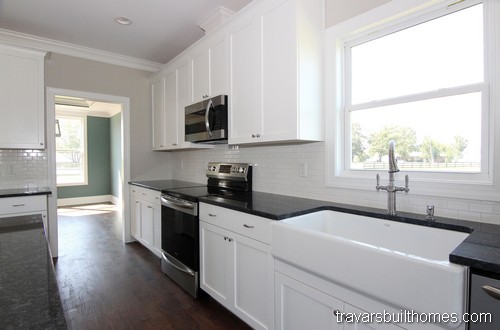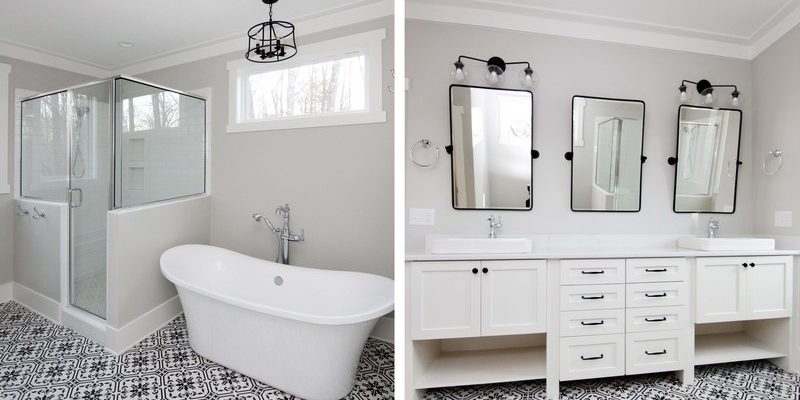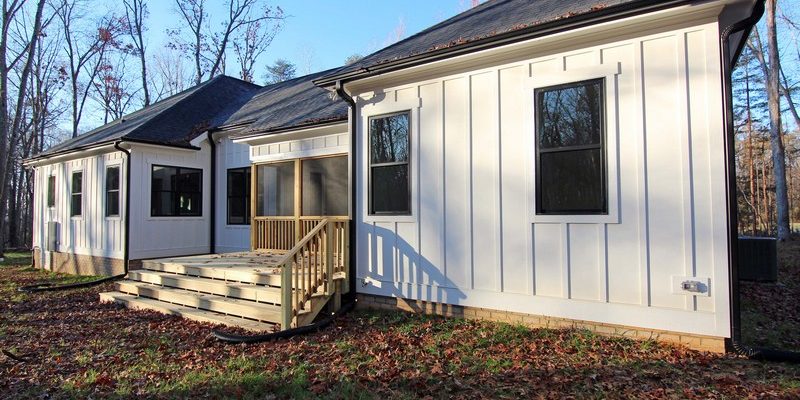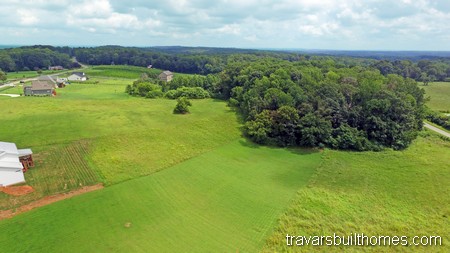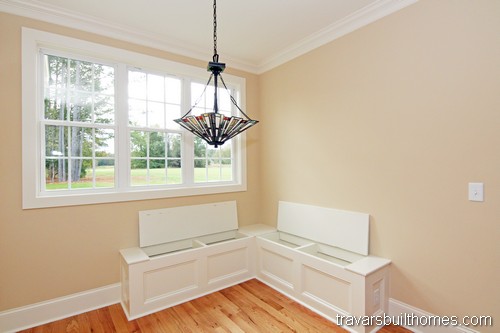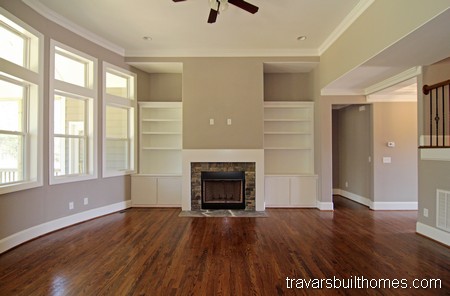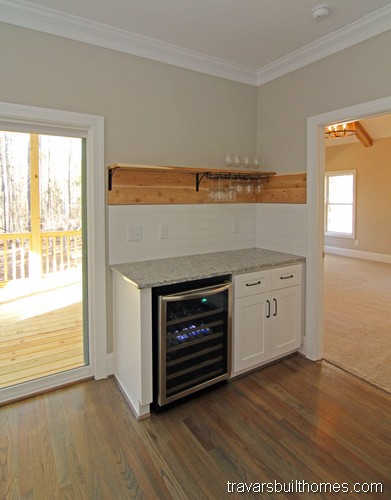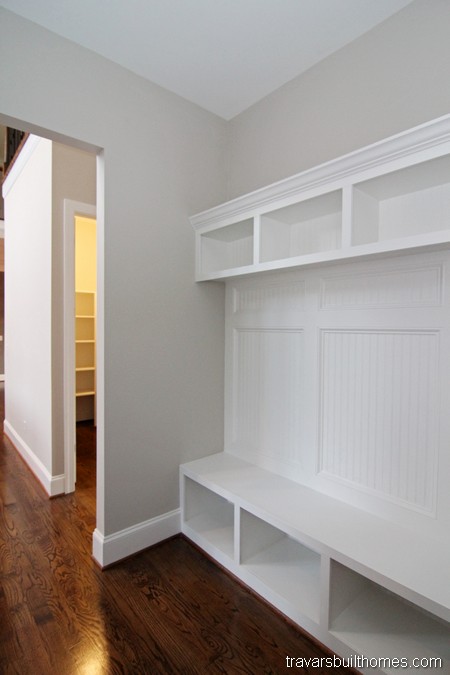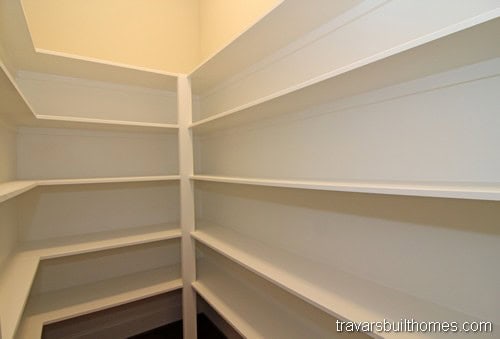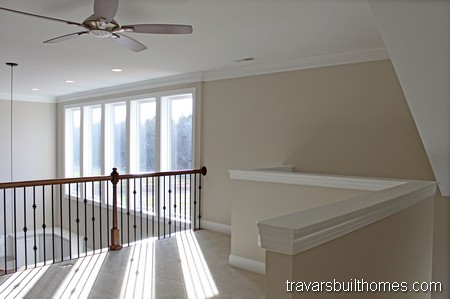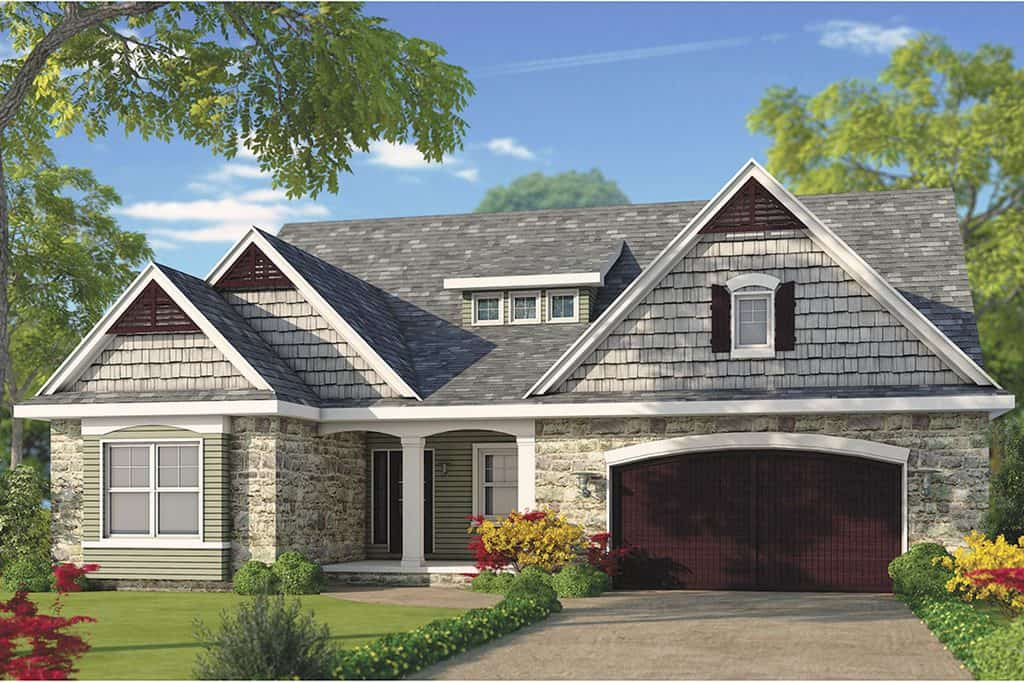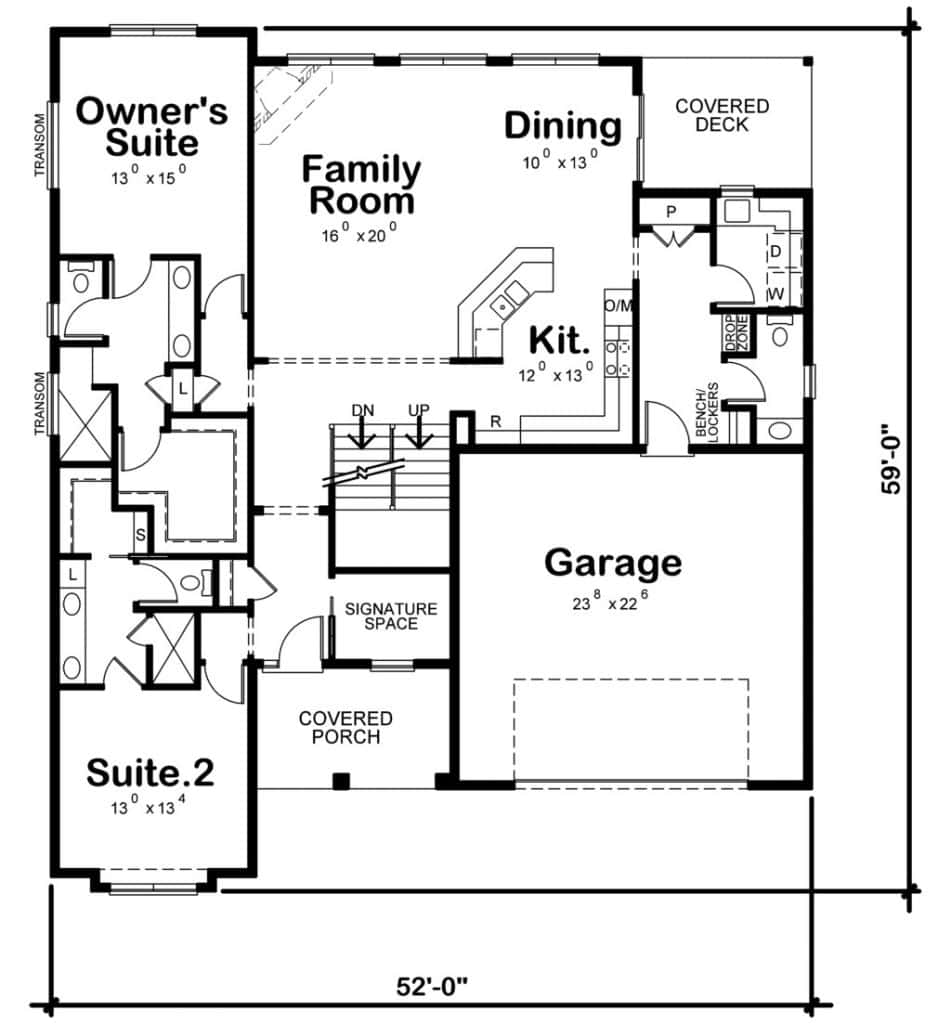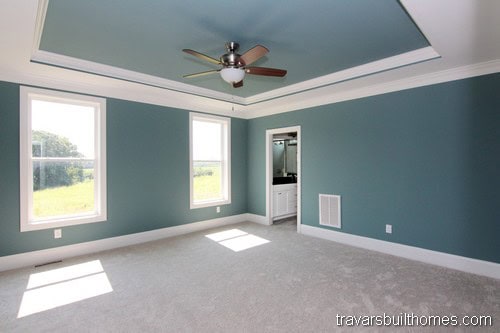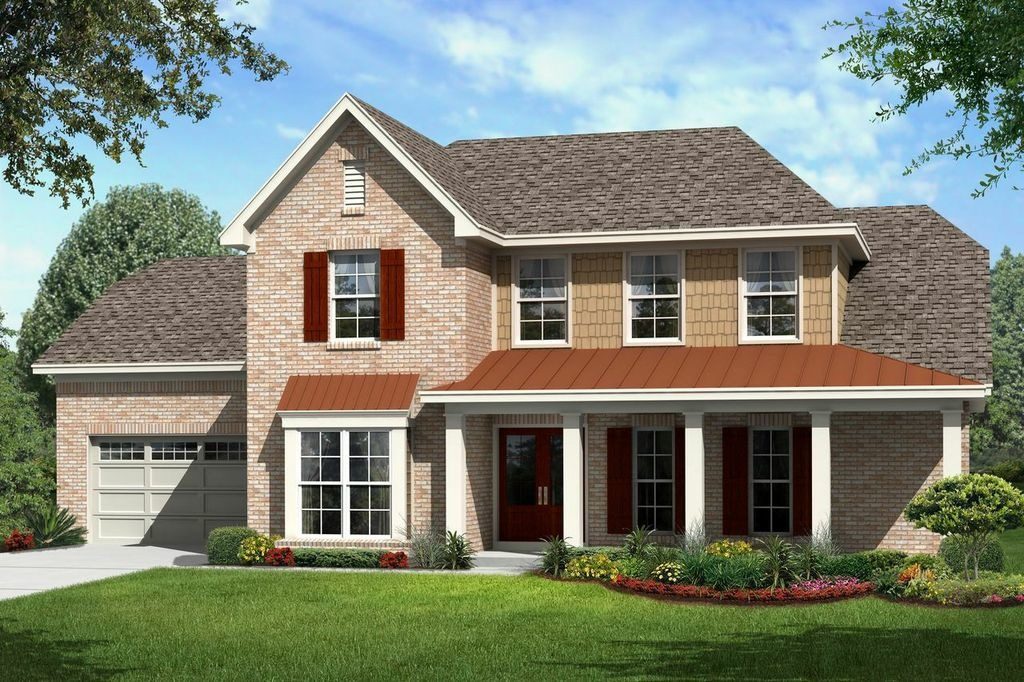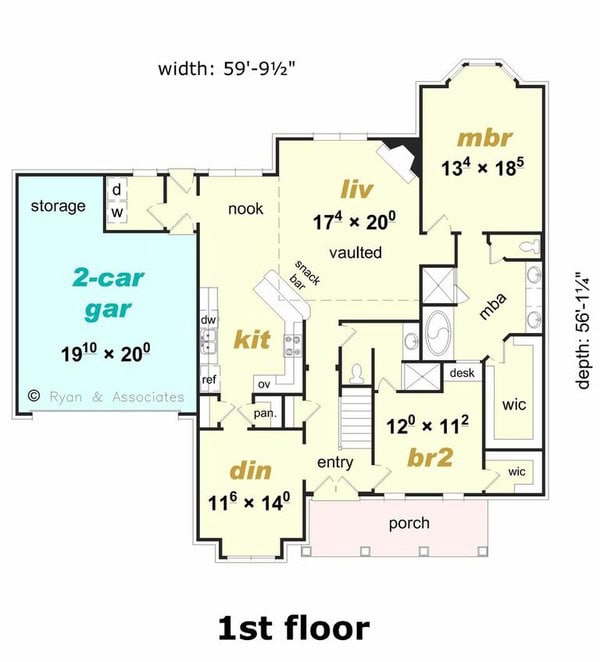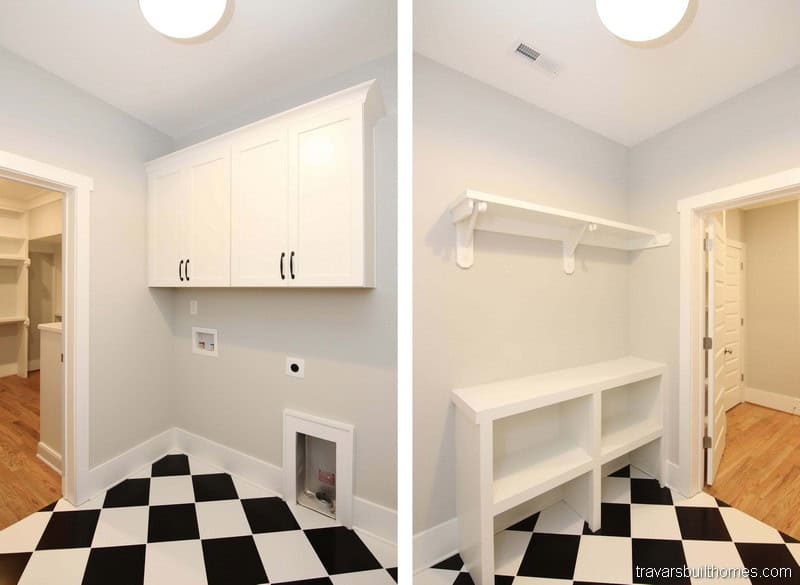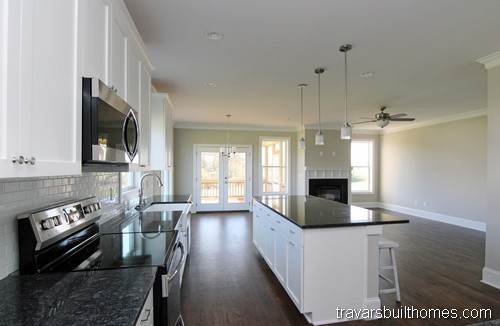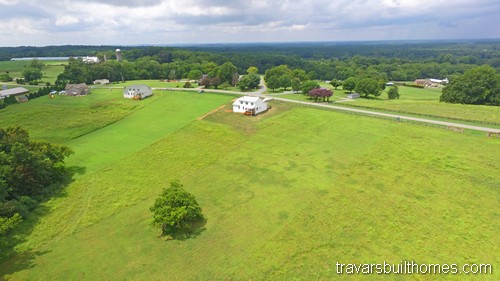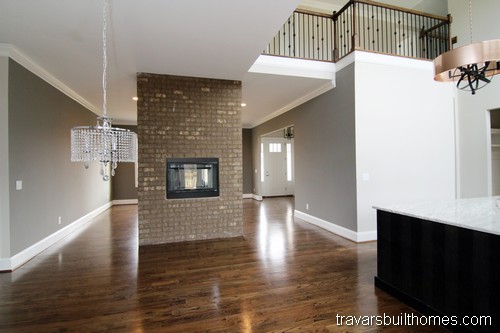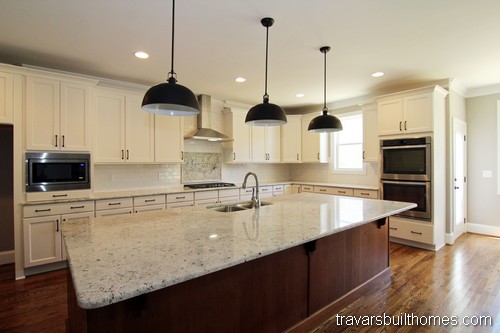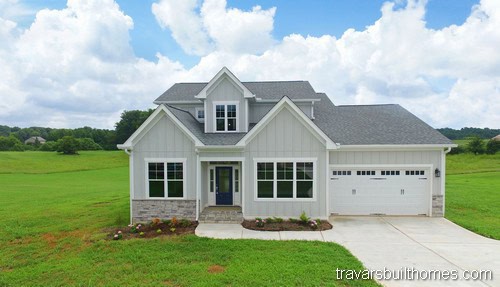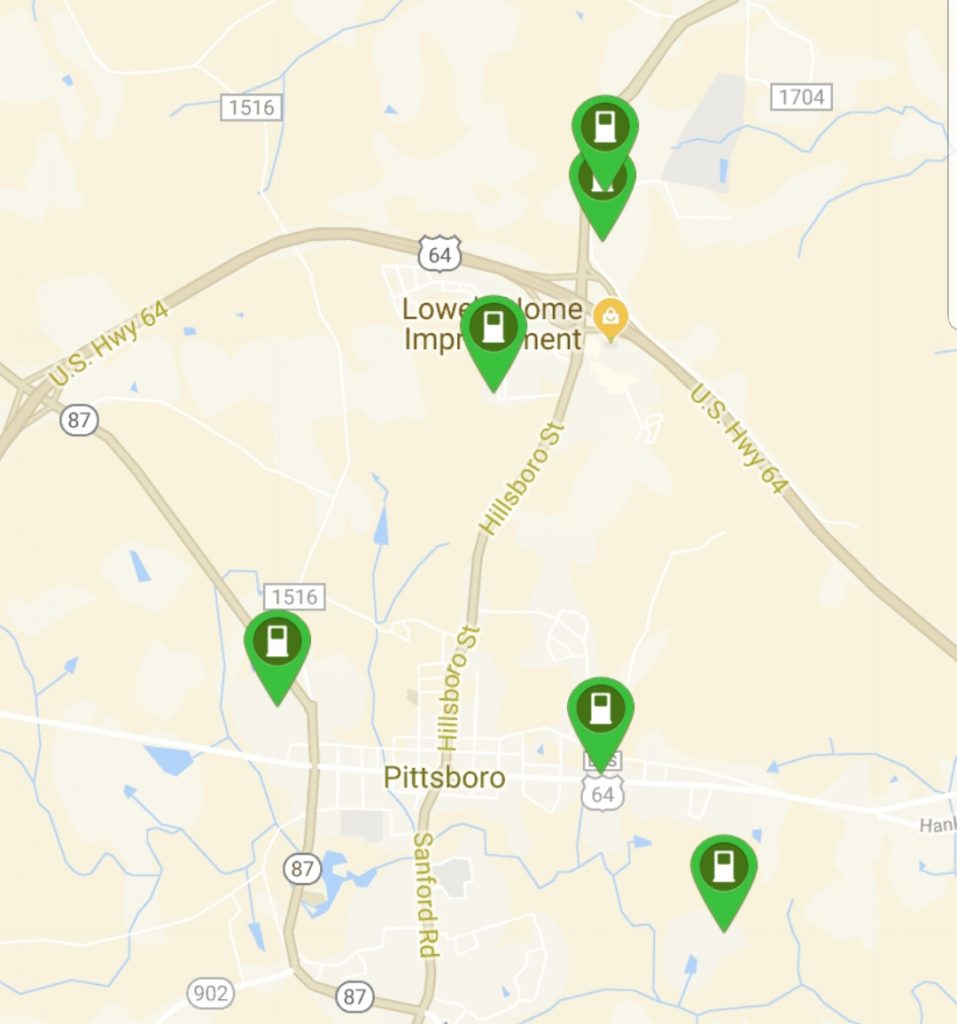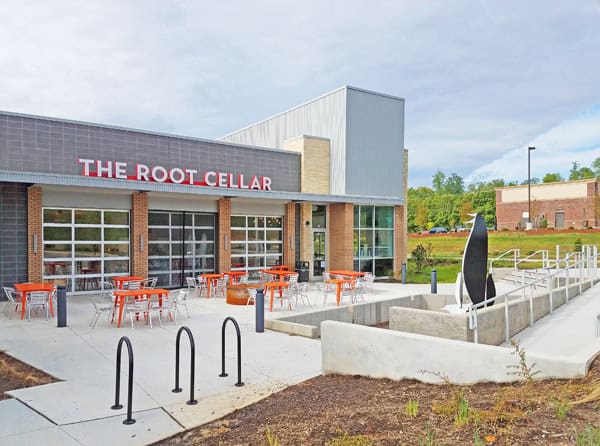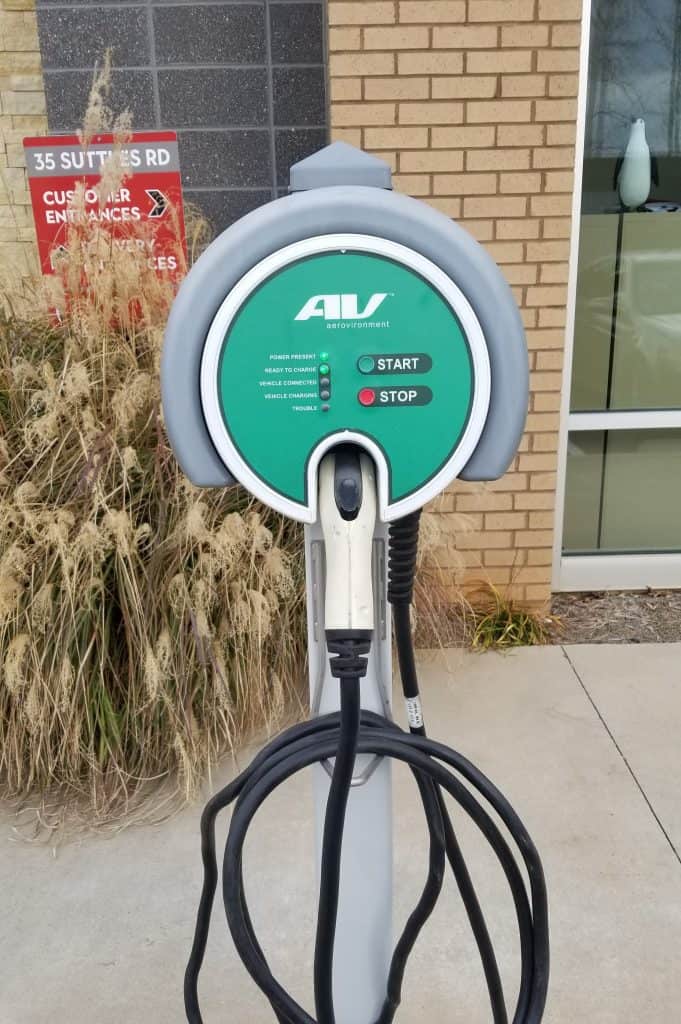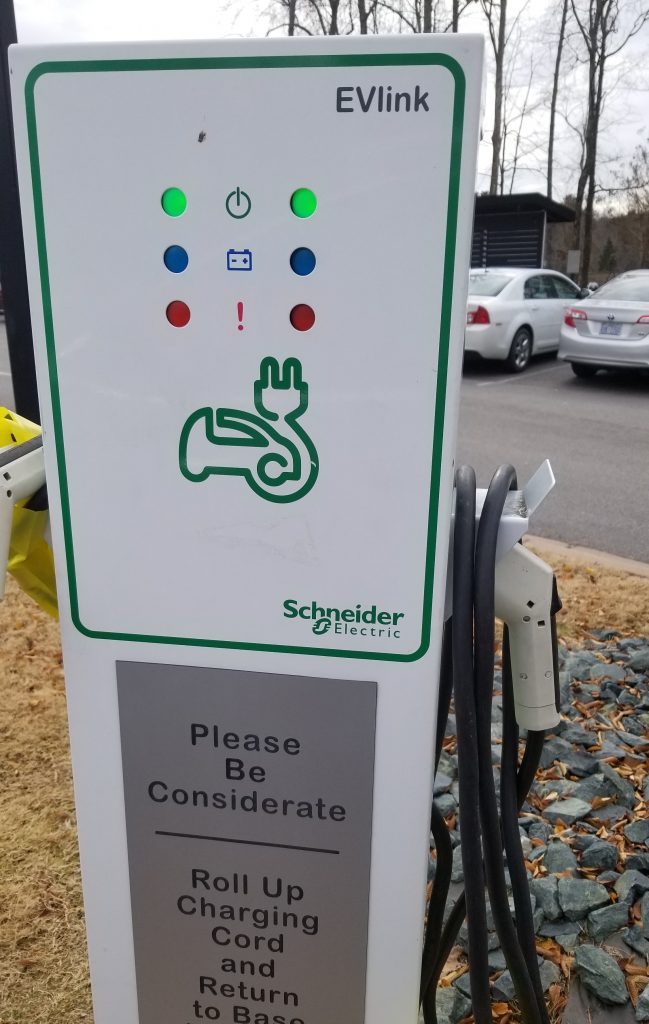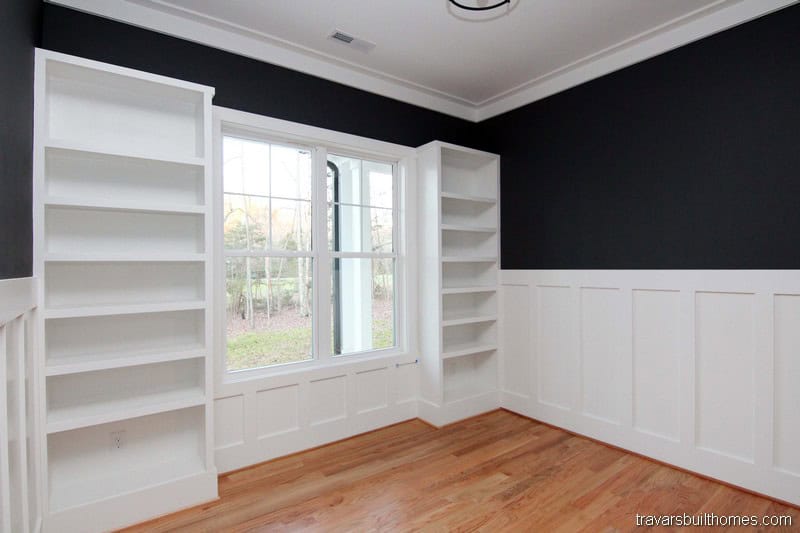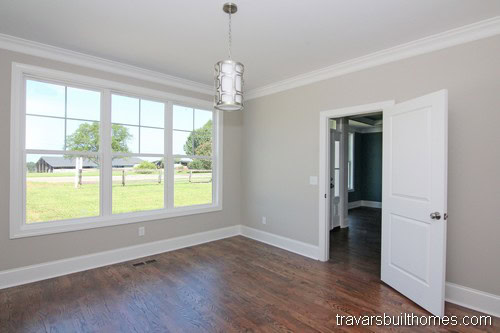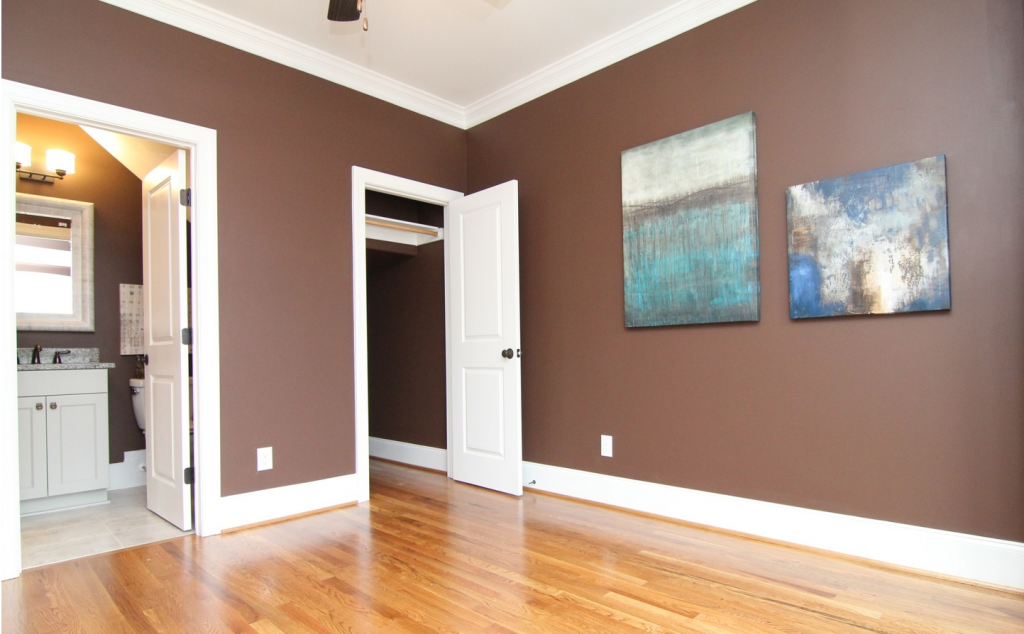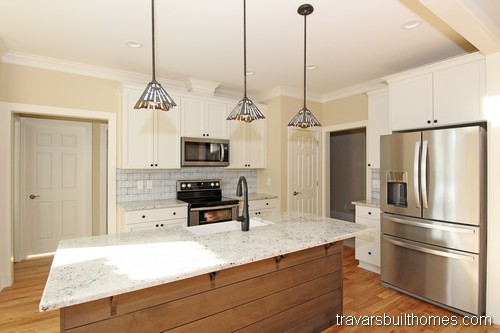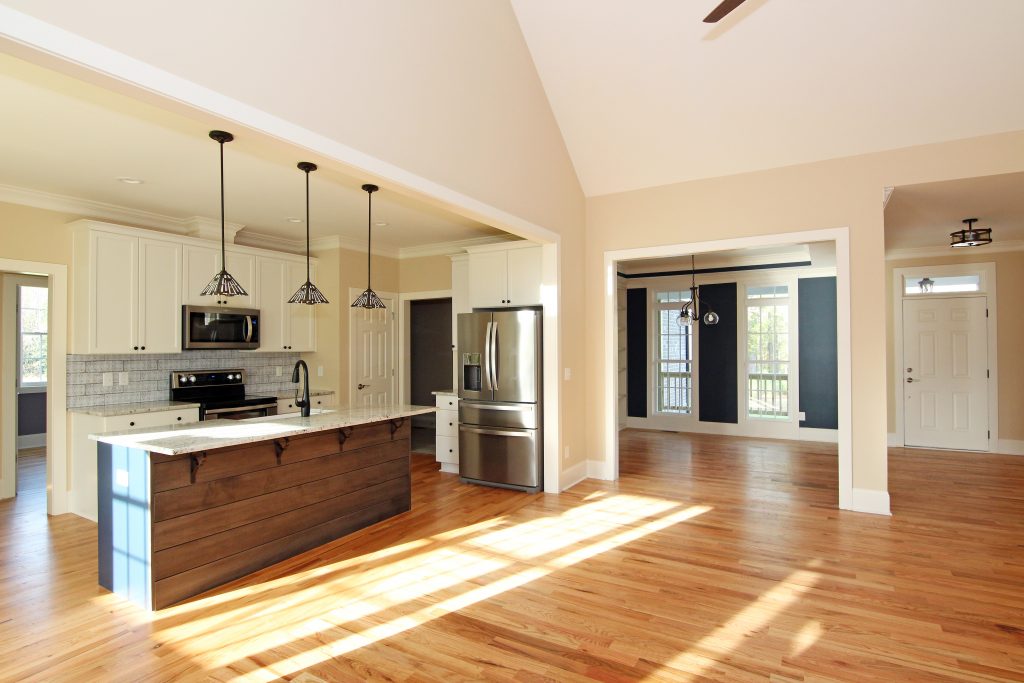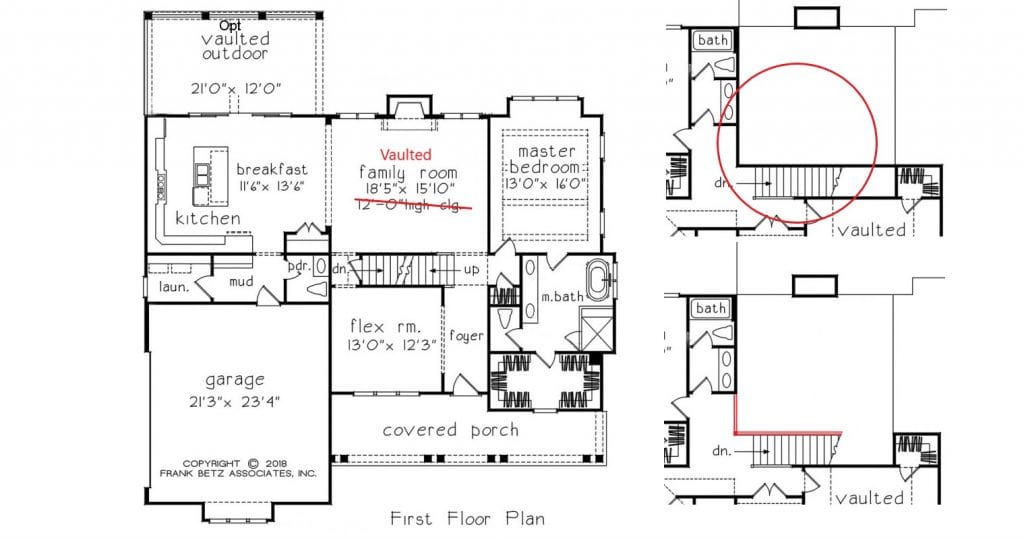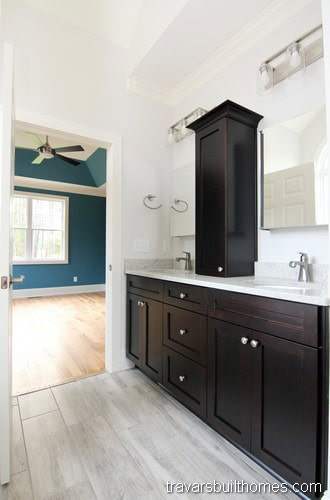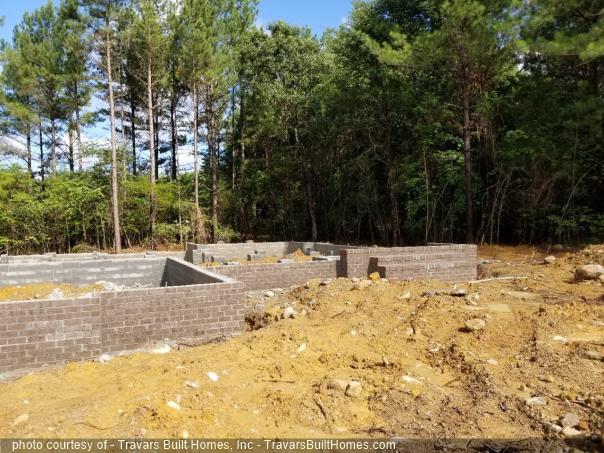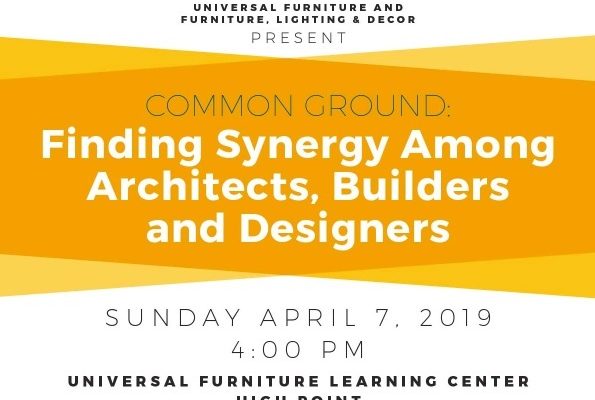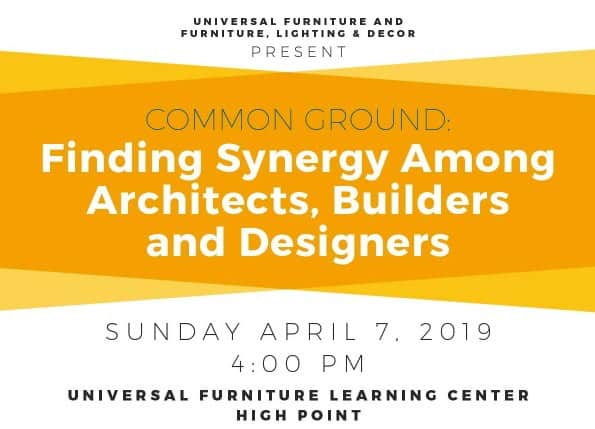Modern Farmhouse architectural styles are a top request for 2021 new homes in NC.
Farmhouse style homes feel familiar and flexible – designed with simple lines, covered porches, gable roofs, dormers, and big kitchens with islands open to living spaces. See some of the most popular modern farmhouse features in the photos, below. Contact Travars Built Homes for farmhouse floor plans and pricing.
Modern farmhouse feature #1: White exteriors (with black window frames)
This countryside modern farmhouse illustrates the simplistic allure of classic black and white – with a pop of color for the front door that adds interest.
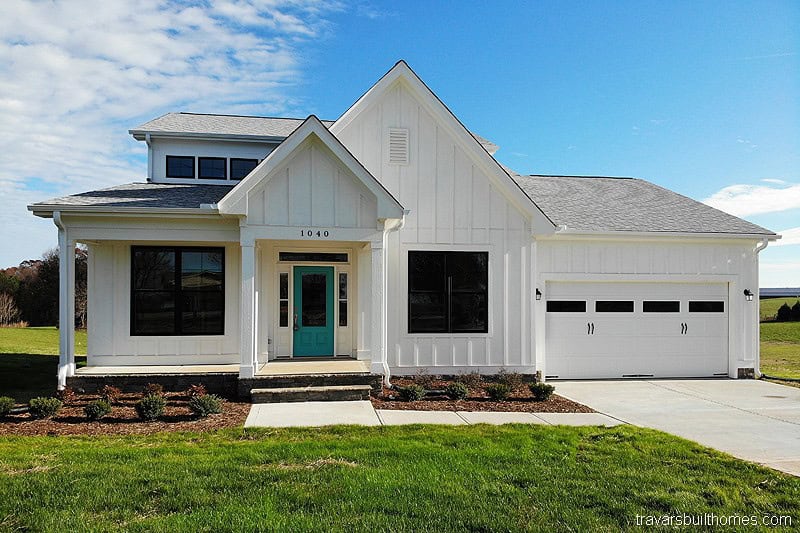
Modern farmhouse feature #2: Built in bookcases and custom storage spaces
When you create your new home with one of the best custom home builders in Chatham County, you can ask for built-ins like this wherever you want them. Built in bookcases, cubbies and storage spaces are another practical feature in modern farmhouses.

Modern farmhouse feature #3: Board and Batten front exteriors with dormers
Board and batten is the top choice for exteriors on modern farmhouses. The classic lines you see here are framed by roof pitches and a dormer indicative of this popular architectural style.
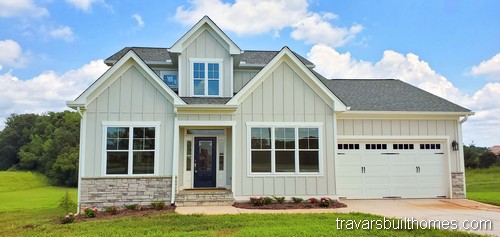
Modern farmhouse feature #4: Metal roof accents
Metal accents on modern farmhouse roofs like this add just a touch of texture, in a nod to historical structures. Popular locations for metal accents include the roof over the front porch, bump outs, and the roof over a back porch to give importance to outdoor living.

Modern farmhouse feature #5: Porches
Big covered porches and big screen porches are indicative of the emphasis on outdoor living inherent to modern farmhouse lifestyles. Custom builders like Travars Built Homes include extra details that make these spaces even more enjoyable.
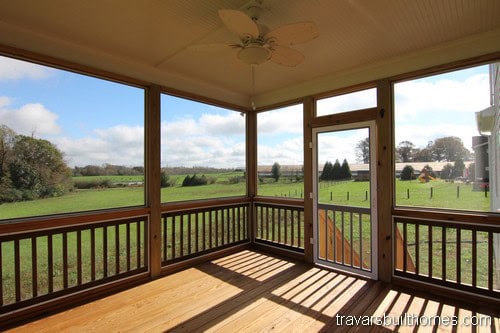
Modern farmhouse feature #6: Open kitchen and great room
Wide open spaces reminiscent of prairies and heartlands compel the main areas of modern farmhouses to feel spacious. Beams, lighting, hardwoods and multiple entrances inspire free-flow traffic and conversation.
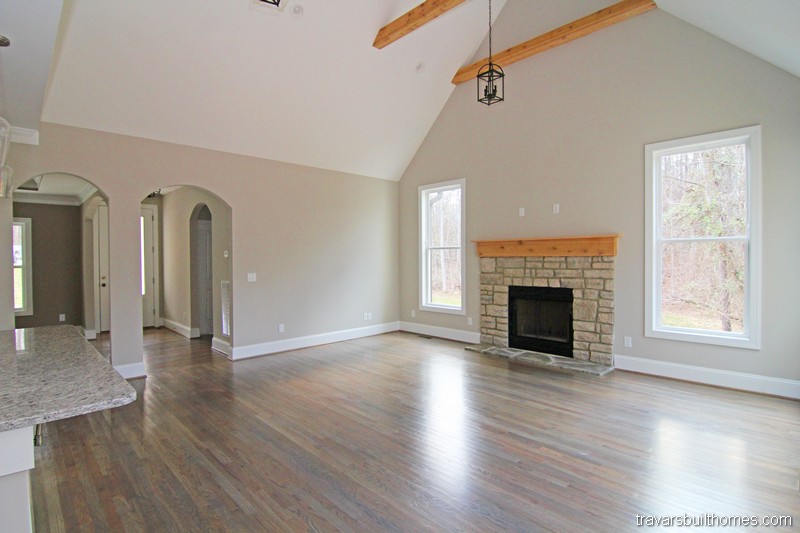
Modern farmhouse feature #7: Big island
Large kitchen islands have become the mainstay of modern farmhouses. Ask your builder how to customize yours to include everything from a sink, tuck under seating, wine cooler, microwave, cabinetry or other special features. Most of all – endless uses for the huge surface from gatherings to cooking, crafts and projects.
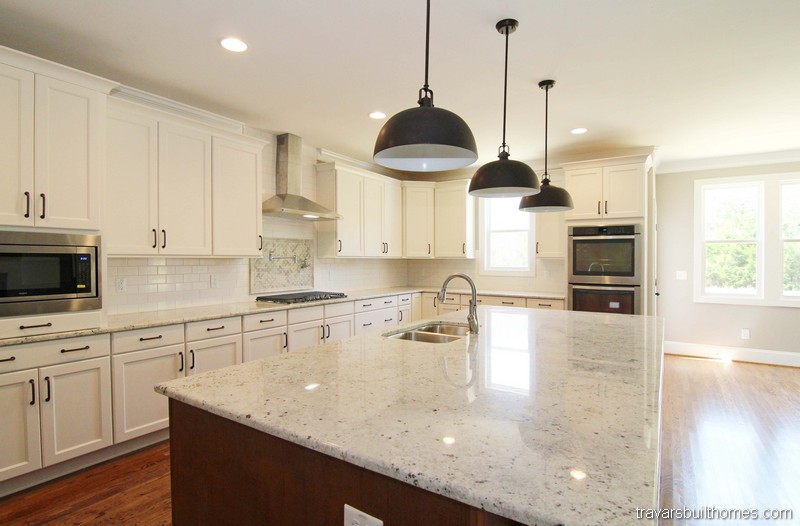
Modern farmhouse feature #8: White cabinets
A white exterior is often replicated inside new modern farmhouses, with white cabinets throughout the home – contrasted by pairings with dark gray, espresso, or even blue islands.

Modern farmhouse feature #9: Apron sink
Ceramic or stainless steel apron front sinks (also called farmhouse sinks) are considered to be a staple in modern farmhouse style homes. They typically are wide and deep, without a barrier in the middle. Like the picture below, they offer a seamless, smooth surface at the front, for easy cleanup.
